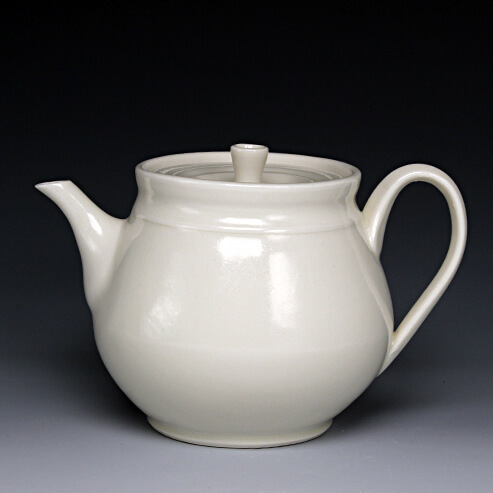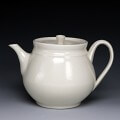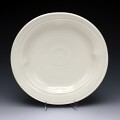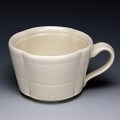
Dan Schmitt grew up primarily in the greater Seattle area as one of two sons born to German parents who settled there in 1977 to start a medical practice. Originally going to college to study sports medicince he discovered ceramics at the University of Puget Sound under Ken Stevens and John McCuistion and went on to receive his MFA from Kent State University under Kirk Mangus in 1998.
After graduate school he moved back to the Pacific Northwest and set up his studio in Eugene, Oregon, where he continues his art practice today. His work first gained national recognition when in 2000 he was commissioned by the Smithsonian’s Renwick Gallery to create a five piece place setting and tea service to be included in their survey of American Ceramics titled USA Clay which has since been placed on permanent display at the Smithsonian’s Luce Foundation Center for American Art. He has exhibited and sold his work across the country through galleries, craft shows, and exhibitions.
In addition to his studio practice Dan has taught at the University of Oregon and at Lane Community College.
I am continually drawn to the many layers of meaning that pottery carries. Historically, cultures have formed strong and lasting identities around their ceramics – China with porcelain, Japan with teawares, Italy with majolica and terracotta, etc. Ceramic materials themselves carry a matrix of assumptions. For example, porcelain symbolizes purity, preciousness, translucency and high technology. Pottery as a vessel for cuisine identifies us with our cultures as strongly as our food and eating habits do. Pottery is part of the furniture of our daily lives and is an indicator of our personas – elegant or casual, literal or metaphorical, traditional or modern. Edmund de Waal comments, “Pots ask us key questions. Not just if we like the look of something, not if it brings us pleasure, though both these things are under rated, but what our relationship with things is actually about.”
By making and selling in an urban environment, the pots I make are a reflection of this environment. Historically, pots made for use were made in quantity and were made with production in mind, as opposed to creating a precious few rarified objects. The work I make follows this historical approach and is made to be compatible and companionable with each other. I make tableware; mostly cups, bowls, plates and teapots. These are the pots that we become most acquainted with through daily use. The pieces I make are intended to be interacted with, they are made to be put out on the table and used. A statement by British potter Walter Keeler captures the intent of making functional work: “The goal in this complex process is the finished pot performing its function; a surprising object doing a commonplace job.”
I am currently working with porcelain using a clear glaze. This allows me to focus on form, using the glaze to finish the piece rather than to decorate it. I feel this helps unify the clay and the glaze rather than creating a separation between the two.
I enjoy the fluidity of working with clay and exploit the process of potting for my decoration; making use of finger grooves, trimming lines, glaze pools and marks from handling and firing. I am continually interested in how these elements give a pot “life.” The depth of surface created by the translucent properties of porcelain and the way clay and glaze interact with light creates an interesting tension between “inside” and “outside.”






